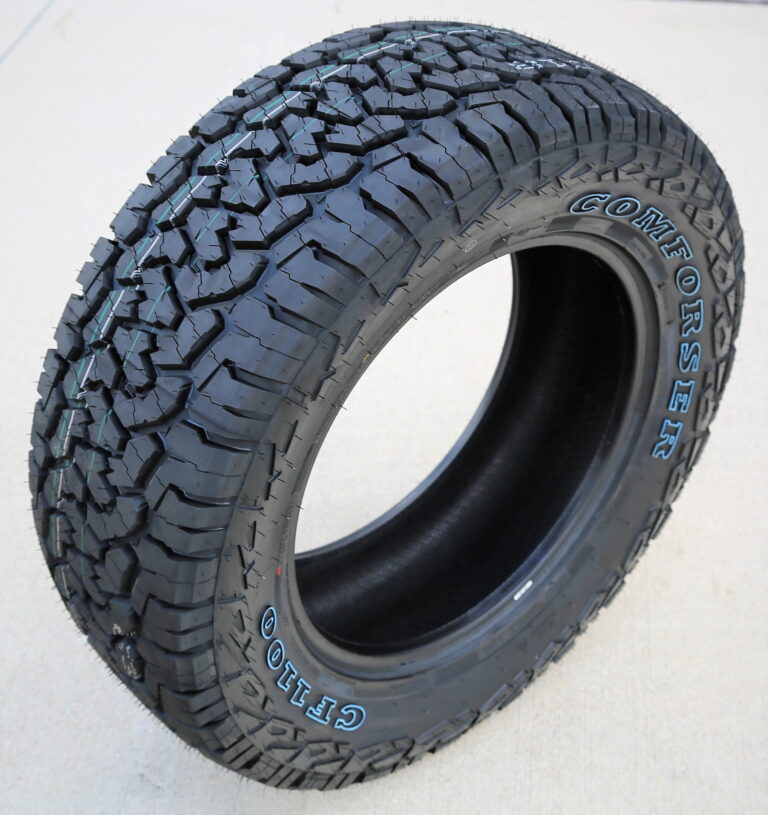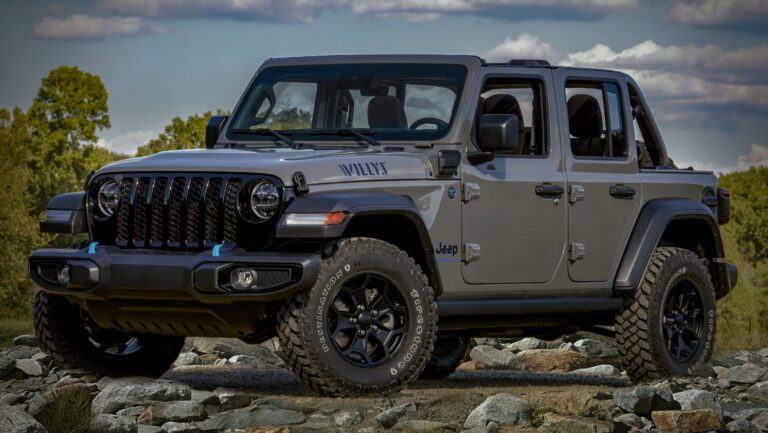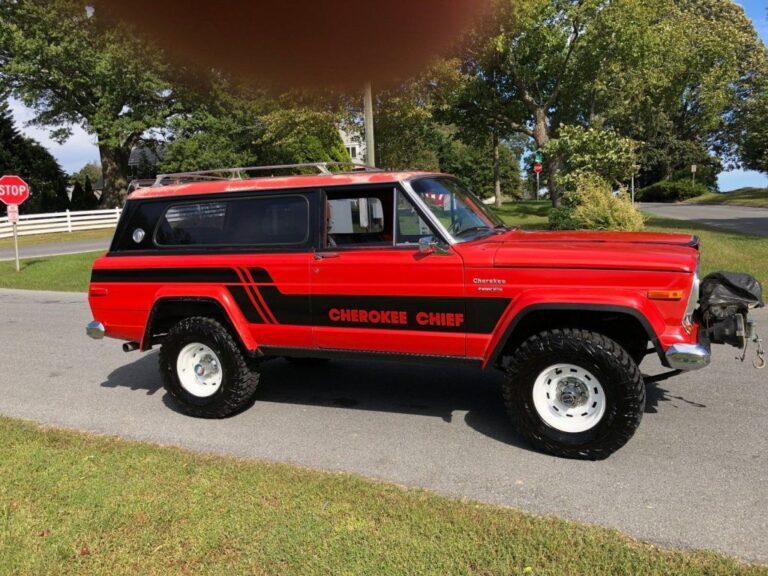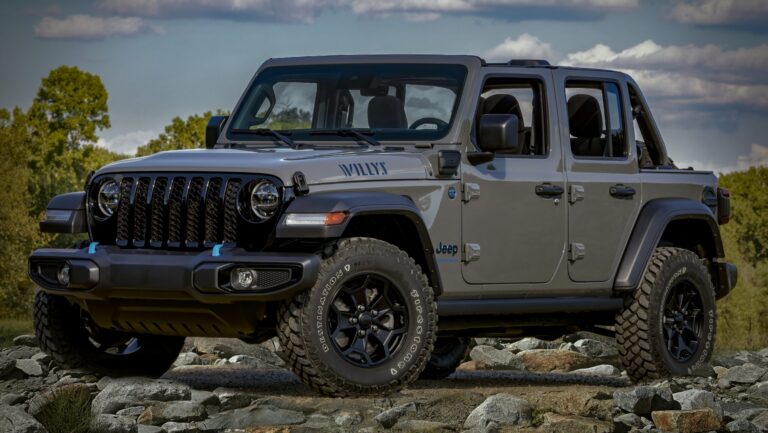1946 Jeep Willys For Sale: Your Guide to Owning a Piece of Automotive History
1946 Jeep Willys For Sale: Your Guide to Owning a Piece of Automotive History jeeps.truckstrend.com
The year 1946 marked a pivotal moment in automotive history, as the legendary Jeep, having proven its unparalleled utility and ruggedness on the battlefields of World War II, transitioned from a military workhorse to a civilian icon. The 1946 Jeep Willys (specifically the CJ-2A model) became the first full-production civilian Jeep, offering returning soldiers and eager civilians a taste of the durability and versatility that had won the war. For enthusiasts and collectors today, finding a 1946 Jeep Willys for sale isn’t just about acquiring a vehicle; it’s about owning a tangible piece of American ingenuity, a symbol of freedom, and a testament to enduring design. This comprehensive guide will navigate you through the world of buying, understanding, and appreciating this remarkable vintage vehicle.
The Enduring Legacy of the 1946 Willys CJ-2A
1946 Jeep Willys For Sale: Your Guide to Owning a Piece of Automotive History
Born from the success of the military MB and Ford GPW models, the Willys-Overland Motors company wasted no time in adapting their "Go-Devil" machine for the civilian market. The Civilian Jeep, or CJ-2A, introduced several key features that distinguished it from its wartime predecessors, making it more suitable for farming, construction, and recreational use. These innovations included a fold-down tailgate, a side-mounted spare tire, a larger fuel tank, improved headlights, and a slightly revised transmission and transfer case.
The 1946 model year holds particular significance as it represents the first full year of CJ-2A production, making early examples highly sought after by purists. It retained the robust 134 cubic inch "Go-Devil" L-head four-cylinder engine, renowned for its simplicity, reliability, and surprising torque. Coupled with a three-speed T-90 manual transmission and a Dana 18 transfer case, the CJ-2A offered legitimate four-wheel-drive capability that few vehicles of its era could match. Its lightweight, compact size, and impressive ground clearance made it an ideal off-road companion, a legacy that continues to define the Jeep brand today. Owning a 1946 Willys is not just about nostalgia; it’s about possessing a vehicle that genuinely pioneered the modern SUV and off-road segment.
What to Look For When Buying a 1946 Willys Jeep
When you embark on the journey of finding a 1946 Jeep Willys for sale, a thorough inspection and understanding of common issues are paramount. These vehicles are nearly 80 years old, and their condition can vary wildly.
- Rust, Rust, Rust: This is the ultimate killer of vintage vehicles. Pay extremely close attention to the frame (especially where the body mounts), floorboards, rear cargo area, front fenders, and the inner wheel wells. Surface rust is manageable, but extensive rot requiring panel replacement or frame repair can quickly inflate restoration costs. Check beneath any rubber mats or undercoating.
- Engine and Drivetrain:
- Engine (L-134 "Go-Devil"): Does it start easily? Listen for unusual noises (knocks, taps). Check for excessive smoke from the exhaust (blue indicates oil burning, black indicates rich fuel mixture). Look for oil leaks, particularly around the oil pan, valve cover, and rear main seal. While these engines are tough, a full rebuild can be costly.
- Transmission (T-90) & Transfer Case (Dana 18): Check for smooth shifting through all gears (including reverse and 4×4 ranges). Listen for grinding or whining noises. Look for fluid leaks from seals. The transfer case should engage and disengage 4×4 and low range without excessive force.
- Axles (Dana 25 front, Dana 41 rear): Check for leaks around the differential covers and wheel hubs. Listen for humming or clunking noises during a test drive, which could indicate worn gears or bearings.
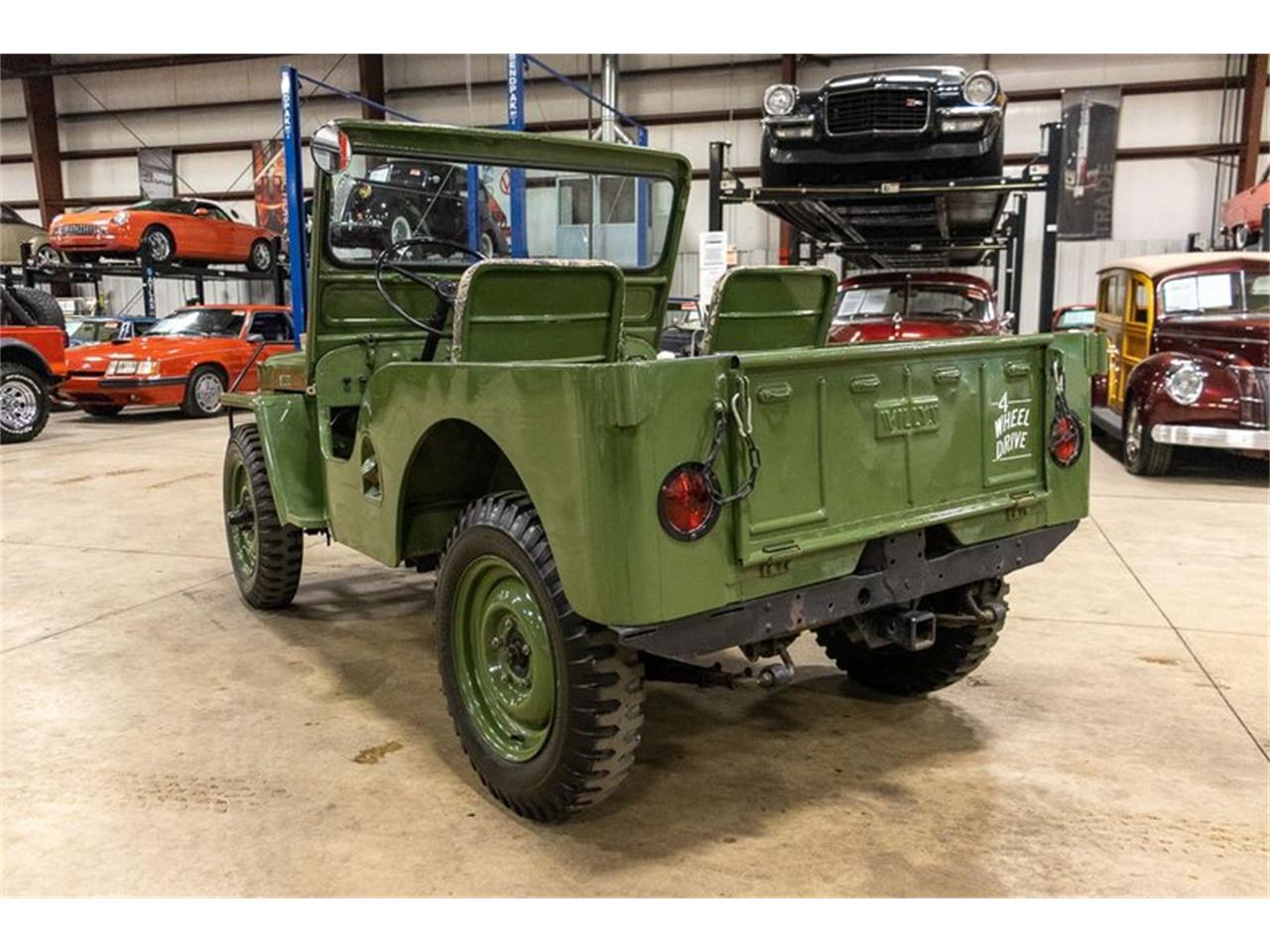
- Electrical System: Most original 1946 Willys Jeeps operated on a 6-volt electrical system, which can be quirky compared to modern 12-volt systems. Check if all lights (headlights, taillights, turn signals if added), gauges, and the horn function correctly. Many owners convert to 12-volt for easier starting and accessory compatibility, which isn’t necessarily a negative but should be noted.
- Brakes, Steering, and Suspension:
- Brakes: The original drum brakes are simple but effective if maintained. Check for proper pedal feel (not spongy), even braking, and no pulling to one side. Inspect brake lines for rust or leaks.
- Steering: Check for excessive play in the steering wheel, which could indicate worn steering box components, tie rod ends, or kingpins.
- Suspension: Inspect leaf springs for cracks or sag, and shock absorbers for leaks. The ride will be firm, but it shouldn’t be bouncy or crash over bumps.

- Originality vs. Modifications: Decide what your goal is. Are you looking for a historically accurate restoration project, or a more drivable vehicle with modern upgrades? Many Willys Jeeps have had engine swaps, 12V conversions, power steering/brakes added, or even body modifications. Originality often commands a higher price for collectors, while modifications can enhance usability for a driver.
- Documentation: A clear title is essential. Any service records or history of previous ownership can add value and peace of mind.
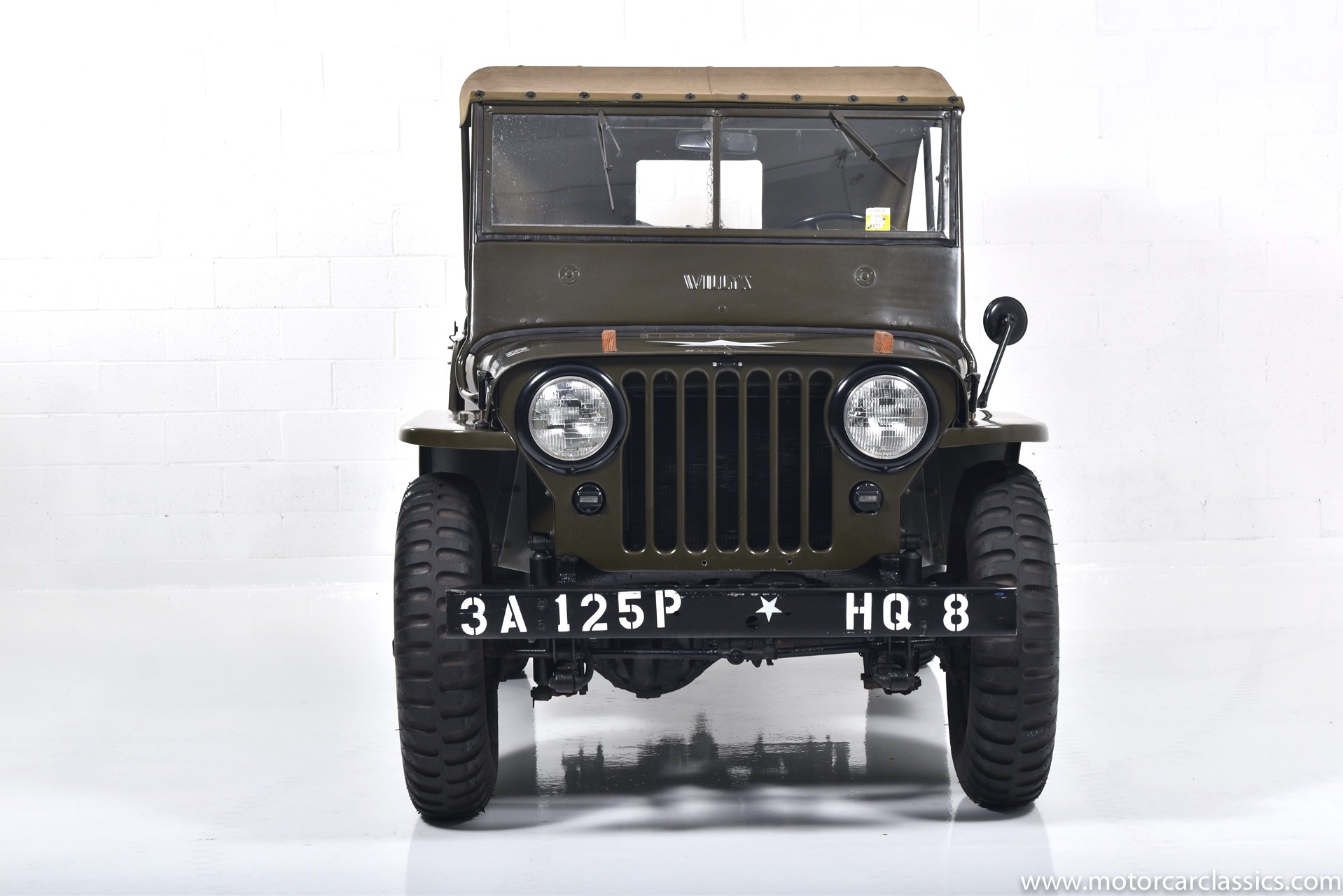
Types of 1946 Willys Jeeps For Sale: Condition Categories
When searching for a 1946 Jeep Willys for sale, you’ll encounter vehicles in various states of repair, each with a corresponding price point. Understanding these categories will help set realistic expectations.
- Basket Case/Project: These are often non-running, incomplete, or severely rusted vehicles. They represent the lowest entry point but require extensive time, skill, and financial investment for a complete restoration. This is for the dedicated enthusiast with a garage full of tools.
- Driver Quality: These Jeeps are typically running and driving, but they may have cosmetic flaws (faded paint, minor dents), some surface rust, or minor mechanical quirks. They’re suitable for immediate enjoyment and can be improved over time. This is a popular category for those who want to experience the vintage Jeep without a full-blown restoration.
- Partially Restored: Some significant work has been done, such as an engine rebuild, new paint, or interior refresh, but the vehicle is not yet complete. This can be a good option if the previous owner tackled the most challenging aspects, leaving you to finish it to your liking.
- Fully Restored: These vehicles have undergone a comprehensive restoration, mechanically sound, with good paint, interior, and overall appearance. They might not be 100% factory original but are in excellent, ready-to-enjoy condition.
- Concours/Show Quality: The pinnacle of restoration, these Jeeps are meticulously restored to original factory specifications, often period-correct down to the smallest detail. They are pristine, investment-grade vehicles primarily for collectors and show circuits.
The Buying Process: Practical Advice & Tips
Finding and purchasing your ideal 1946 Jeep Willys for sale requires a strategic approach.
- Where to Look:
- Online Marketplaces: Hemmings, Bring a Trailer, eBay Motors, Craigslist (local listings), Facebook Marketplace, and specialty classic car websites are excellent starting points.
- Classic Car Dealerships: Some dealers specialize in vintage 4x4s and may have a curated selection.
- Auctions: Major automotive auctions (e.g., Mecum, Barrett-Jackson) occasionally feature high-quality examples, while local auctions might offer projects.
- Clubs and Forums: Willys-Overland clubs and online forums are fantastic resources, often with classified sections and knowledgeable members willing to share advice.
- Inspection is Key: Always try to inspect the vehicle in person. If not possible, request a video walk-around, detailed photos of specific areas (especially rust-prone spots), and a live video call with the seller. Consider hiring a pre-purchase inspector specializing in classic vehicles if you’re buying remotely.
- Test Drive: If the vehicle is running, take it for a test drive. Listen for unusual noises, check the steering feel, brake effectiveness, and how the transmission shifts. Engage and disengage 4×4 to ensure it works correctly.
- Negotiation: Do your research on comparable sales to understand the market value. Be prepared to negotiate, especially if you find issues during your inspection.
- Shipping and Transport: Factor in the cost of professional vehicle transport if you’re buying out of state. These vehicles are not ideal for long-distance highway driving.
- Post-Purchase: Once purchased, plan for immediate basic maintenance (fluids, filters, spark plugs) before any extensive driving. Secure appropriate classic car insurance and arrange for proper storage.
Owning and Maintaining Your Classic Willys: Challenges & Solutions
Owning a 1946 Jeep Willys is a unique experience, but it comes with its own set of considerations.
- Challenges:
- Lack of Modern Safety Features: No airbags, ABS, or crumple zones. Drive defensively.
- Speed Limitations: These vehicles are not built for highway speeds. Their top speed is often around 50-55 mph, and they can be noisy and uncomfortable on long trips.
- 6-Volt System Quirks: If original, the 6-volt system can be prone to slow cranking in cold weather.
- Ongoing Rust Prevention: Even restored Jeeps require vigilance against rust.
- Finding Skilled Mechanics: While simple, not all modern mechanics are familiar with vintage vehicles.
- Solutions:
- Drive Smart: Plan your routes to avoid high-speed highways. Embrace the slower pace.
- 12-Volt Conversion: A common and often recommended modification for easier starting and the ability to run modern accessories like a radio or phone charger.
- Regular Maintenance: Adhere to a strict maintenance schedule. These vehicles are simple, making DIY maintenance achievable for many owners.
- Join the Community: Willys owner clubs and online forums (e.g., The CJ-2A Page, G503) are invaluable resources for technical advice, parts sourcing, and camaraderie.
- Embrace the Simplicity: The very features that make it "challenging" also make it charming. The mechanical nature, the open-air feel, and the distinct driving experience are what draw enthusiasts.
1946 Jeep Willys For Sale: Estimated Price Guide
The price of a 1946 Jeep Willys for sale can fluctuate significantly based on its condition, originality, history, and location. The table below provides a general estimated price range in USD.
| Condition Category | Description | Estimated Price Range (USD) | Key Considerations |
|---|---|---|---|
| Project/Parts Vehicle | Non-running, significant rust, missing components, complete overhaul required. | $3,000 – $8,000 | Requires extensive time, skill, and financial investment. |
| Driver Quality | Runs and drives reliably, but cosmetically rough, minor mechanical issues, surface rust. | $8,000 – $18,000 | Usable immediately, good base for rolling restoration or enjoyment. |
| Partially Restored | Some major work completed (e.g., engine rebuild, new paint), but not fully finished or detailed. | $15,000 – $25,000 | Less work than a project, but still requires effort and budget. |
| Fully Restored | Mechanically sound, good paint, interior, and overall appearance. May not be 100% original. | $25,000 – $40,000+ | Ready to enjoy, potential for local show circuit. |
| Concours/Show Quality | Meticulously restored to original factory specifications, pristine condition, period-correct detailing. | $40,000 – $60,000+ | Investment-grade, highly sought after by serious collectors. |
Note: These prices are estimates and can fluctuate based on market demand, specific vehicle history (e.g., unique early production features, celebrity ownership), location, and any desirable modifications or accessories included.
Frequently Asked Questions (FAQ) about the 1946 Willys Jeep
Q: What’s the difference between a military Jeep and a civilian Willys?
A: The military Jeep (MB/GPW) was designed for wartime utility. The civilian CJ-2A, like the 1946 model, added features for civilian use such as a tailgate, side-mounted spare tire, civilian gauges, and a more robust lighting system, among other minor changes.
Q: Is it hard to find parts for a 1946 Willys?
A: Surprisingly, no. Due to their popularity and simple design, many aftermarket suppliers and specialty vendors still produce or stock a vast array of parts for the CJ-2A, from engine components to body panels.
Q: Can a 1946 Willys be driven daily?
A: While mechanically capable, it’s not ideal for modern daily driving, especially on highways. Its top speed is low, it lacks modern safety features, and the ride can be harsh. It’s best suited for rural roads, off-roading, short trips, or as a weekend cruiser.
Q: What is the "Go-Devil" engine?
A: The "Go-Devil" refers to the Willys L-134 L-head (flathead) four-cylinder engine. It’s known for its robust construction, simplicity, and impressive low-end torque, making it perfect for off-road and utility work.
Q: Should I convert my 1946 Willys to 12-volt?
A: This is a common and often recommended modification. A 12-volt system offers easier starting, brighter lights, and the ability to run modern accessories. Purists might prefer to keep the original 6-volt system for authenticity.
Q: What is the typical fuel economy?
A: Fuel economy for a 1946 Willys CJ-2A is generally modest, typically ranging from 15-20 miles per gallon (MPG), depending on driving conditions, terrain, and engine tuning.
Q: Are they good off-road?
A: Absolutely. Despite their age, 1946 Willys Jeeps are incredibly capable off-road due to their lightweight design, short wheelbase, excellent ground clearance, and robust 4×4 system. They can tackle challenging terrain with ease.
Conclusion
The allure of a 1946 Jeep Willys for sale extends far beyond its four wheels and rugged body; it embodies a rich history of resilience, adaptation, and American innovation. Whether you’re a seasoned collector seeking a concours-level restoration or an aspiring enthusiast looking for a charming "driver" to tinker with, owning a CJ-2A is a deeply rewarding experience. It’s an investment not just in a vehicle, but in a legacy. With careful research, a thorough inspection, and a passion for these iconic machines, you can bring home a piece of automotive history that will continue to turn heads and conquer trails for generations to come. The "Universal Jeep" truly lives up to its name, proving that some legends never fade.

